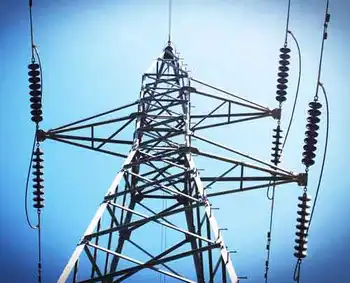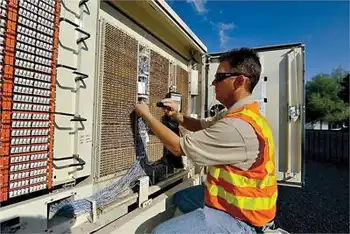A biomass breakthrough
PERRYVILLE, MISSOURI - The workhorse of renewable fuels in Missouri may be found in its forests, farms and pastures.
Across the state, the idea of using plant waste such as wood scraps, wheat straw or tree trimmings as fuel for electricity generation is gaining steam.
In Perryville, a private developer is planning a $100 million plant that will burn wood waste from nearby forests to generate enough electricity to light 23,000 homes. The University of Missouri-Columbia is spending more than $60 million to replace a boiler at its power plant that will burn exclusively wood waste. Even the state's largest utility is looking at how to use biomass at its power plants to displace some of its coal usage.
A combination of new and proposed state and federal policies is driving interest in renewable energy.
Among them is a ballot initiative approved by Missouri voters last fall that requires investor-owned utilities to use renewable fuels, including biomass, to generate 15 percent of their electricity by 2021.
Geography and the state's natural resources also play a part in the emerging interest in biomass as a power plant fuel.
Missouri isn't considered a prime candidate for commercial-scale solar projects. And wind farms have so far been limited to far northwestern Missouri. Meanwhile, the state's forests, pasture and farmland could all be considered potential fuel sources.
By one estimate, found in a June report by the Natural Resources Defense Council, using just a fourth of the state's agricultural and wood waste would equal 7 million tons of biomass per year — enough to generate about 10 percent of the state's power needs.
Biomass is generally defined as any kind of plant-derived organic matter. The term often means wood waste such as mill residue from paper or pulp mills; forest residue left behind by loggers; agricultural waste such as corn cobs or any number of dense fast-growing crops such as switchgrass that's planted specifically for use as fuel.
When used to generate electricity, biomass can be burned directly to generate electricity or it can be mixed with coal, a process known as co-firing.
Nationwide, biomass fuels less than 1 percent of the nation's electricity. But that figure is expected to grow to 4.5 percent by 2030, according to the Energy Information Administration, the statistical arm of the Energy Department.
The use of biomass is generally embraced by environmentalists, who see potential to displace coal and help cut emissions of carbon dioxide, the main greenhouse gas linked to global warming.
Facilities that burn biomass emit only the CO2 that trees and plants absorb while they're growing. But it's the same gas that would be released when they die and decompose. Coal combustion releases CO2 that was captured millions of years ago and wouldn't otherwise be vented into the atmosphere.
The state's forest products industry also sees benefits from biomass by creating a market for agricultural and wood waste that is often left in the fields, forest floors or sent to landfills.
In the past, pulp and paper mills bought wood chips and similar byproducts. But the mills have since left Missouri, so much of timber that would have been used is instead left behind in the woods or isn't harvested, said Brandon O'Neal, director of education and government relations for the Missouri Forest Products Association, based in Jefferson City.
"We have a lot of unused timber supply," O'Neal said. "You don't want to go out and clear cut everything. But there is definitely a lot of timber out there that can be harvested in a way that's healthy for the forest."
Compared with neighboring Illinois, Missouri is relatively rich in forest-based biomass. Missouri could produce an estimated 2.9 million dry tonnes of forest and mill residues annually, three times the volume in Illinois, according to a 2005 report by the National Renewable Energy Laboratory.
Farmers and private owners of forest land also stand to benefit under a provision in the 2008 Farm Bill that provides matching payments for feedstock that's sold to electric generators.
Advocates of the fledgling biomass industry say the emergence of a market for wood chips and energy crops in Missouri could not only displace fossil fuel use; it could improve the health of forests by selectively thinning them of dead and diseased trees and replacing them with healthy ones.
AmerenUE, which sells electricity to 1.2 million customers in Missouri, sees the potential to displace 3 percent to 10 percent of the coal used at some power stations with biomass, said Richard Wright, managing executive for renewables.
The St. Louis-based utility has already had consultants Black & Veatch study biomass opportunities, and it will probably conduct pilot projects at certain plants within a couple of years, Wright said. But there's a lot of analysis to be done before then.
"There are different barriers to being able to co-fire things other than what (the plant) is designed to burn, such as coal," he said. "First you have to decide what type of biomass is available. Then you have to look at transportation. Then you go to the next step and evaluate the facility and can your facility handle that fuel." Making a biomass project cost-effective is another barrier. Right now, a woody biomass is still more expensive on an energy equivalent basis than coal, most of which is delivered from Wyoming's Powder River Basin, Wright said.
AmerenUE investigated the potential for burning wood at its Sioux plant in St. Charles County a few years ago after severe storms downed trees and limbs across its service area, Wright said. But the plant's coal crushing machine wouldn't take trimmings that were larger than a quarter-inch in diameter. And tree trimmers couldn't mill the fallen limbs and branches to the required size. In the end, executives scuttled the idea.
The University of Missouri-Columbia is already meeting 10 percent of its power plant fuel needs with biomass by co-firing wood waste with coal. It's also replacing one of five coal boilers with one that exclusively burns biomass. When the project is complete in late 2012, the university will have reduced its coal purchases by about 15 percent, said Gregg Coffin, the plant's superintendent.
Over the past few years, the university has experimented with various types of feedstock, including corn cobs, storm debris, wood chips and chopped up wooden pallets. In the future, the school could look to dedicated energy crops grown in river bottoms that can't be developed or used for farming.
By the time the boiler project is finished, the school will need 100,000 "green tons" of wood waste per year. By contrast the plant proposed for Perryville would require almost 400,000 annual tons.
The university shouldn't have trouble finding enough biomass to meet its needs, Coffin said. But he and other biomass advocates agree that realizing the state's potential as a fuel supplier will take time.
Any power generator looking for a fuel supply will first look to the cheapest and easiest source. In most cases that's waste from saw mills, cabinet and flooring plants. But only about 3 percent of such mill residue goes unused in Missouri, said Hank Stelzer, a state forestry extension specialist and assistant professor at the University of Missouri.
Of course, Missouri is flush with potential fuel sources: dense hardwood forests, acres of farmland and miles of rolling prairie — a seemingly endless supply of biomass feedstock.
But logging companies working in Mark Twain National Forest lack the expensive equipment needed to harvest forest residue. Much of the rest of the state's 14 million-plus acres of forest land is divided among 350,000 or so private landowners — potentially a logistical nightmare for a plant developer trying to convince lenders that they have a sustainable fuel supply.
Location is yet another challenge. Plants that burn biomass must be near their fuel source because it's too expensive to transport thousands of tons of wood chips more than 50 miles or so, depending on diesel prices.
They and others are concerned the biomass industry — nudged by generous incentives — will develop too quickly and with too little forethought.
"If it's done in balance, it can be a good thing," Stelzer said. "The problem we tend to have as humans is, we say, 'A little is good, so a lot is going to be really great.'"
Related News

N.B. Power hits pause on large new electricity customers during crypto review
FREDERICTON - N.B. Power says a freeze on servicing new, large-scale industrial customers in the province remains in place over concerns that the cryptocurrency sector's heavy electricity use could be more than the utility can handle.
The Higgs government quietly endorsed the moratorium in a cabinet order in March 2022 and ordered a review of how the sector might affect the reliable electricity supply.
The cabinet order, filed with the Energy and Utilities Board, said N.B. Power had "policy, technical and operational concerns about [its] capacity to service the anticipated additional load demand" from crypto mines.
It said the utility had received "several…




